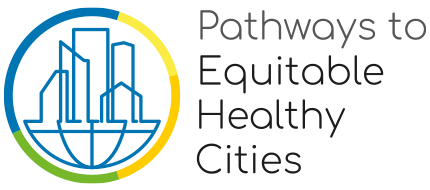Beijing
Work in Beijing is led by Pathways consortium members from Anzhen Hospital and Tsinghua University and involves collaborations with other partner institutions. We work with partners from national and local government agencies and civil society organisations to look at different aspects of inequalities and to identify areas of contemporary and emerging policy interest.
Spatially disaggregated socioeconomic data in Beijing are limited. We are developing a method using open-source street imagery, together with survey data on education, employment, income and housing conditions, to measure socioeconomic status of the population and understand how the poor and wealthy are distributed across the city. We will combine the resulting measures of socioeconomic status with health data to better understand the social inequalities in health (see section on patterns and inequalities in morbidity and mortality).
Read more about the work of the Pathways Poverty and Inequality working group.
Beijing is a global city with highly heterogeneous physical and social environments, and with excellent aggregate health, yet little is known on how health varies across the city. We are investigating the geographic variation of health, including life expectancy, cause-specific mortality and incident cardiovascular disease at the township level in Beijing. We will also estimate the distance or travel time to health facilities for acute coronary events in Beijing and explore the association of health services and other urban environments on their outcomes. We aim to develop urban environment policy scenarios and identify those that improve health outcomes and reduce health inequalities in Beijing.
Read more about the work of the Pathways Health Outcomes working group.
Most residential buildings in Beijing’s urban areas are centrally heated. Due to the unbalanced heating pipe network and inflexible end-use, indoor temperatures are often too hot or too cold, posing a health hazard. However, large-scale indoor temperature sensing is expensive and labour-intensive, as it requires the placement of sensors door-to-door. We have developed a remote sensing method that can detect indoor air temperature from outside the building using infrared cameras to provide intervention recommendations for improving indoor thermal comfort.
Alongside the housing environment, we are studying neighbourhood risk factors that affect human health, such as air, noise and soil pollution, green and blue spaces, sanitation, incidence of bullying, crime and violence, and traffic safety for pedestrians and cyclists, to identify what interventions are needed to make Beijing a healthier city for all its residents.
Among neighbourhood features, air pollution remains a major focus of policy attention and action in Beijing but data on where and why it is highest are limited. Traditional air quality models cannot provide pollution maps with sufficiently high spatial resolution to differentiate microenvironment exposures, which further leads to errors in health impact assessments and priority setting. To address this problem, we use a novel hybrid modelling approach to achieve higher spatial resolution results. We combine this analysis with population distribution data to assess population levels of, and potential socioeconomic inequalities in, air pollution exposures across the city. With policy partners, we are developing and modelling the impacts of policy and intervention scenarios on air pollution reduction in Beijing and its neighbourhoods.
Read more about the work of the Pathways Housing and Neighbourhood working group and Measurement and Modelling working group.
Related publications
Assessing bicycle safety risks using emerging mobile sensing data
Travel Behaviour and Society, vol. 38, pp. 100906, 2025.
Environmental Pollution, vol. 362, pp. 124991, 2024.
The Lancet Planetary Health, vol. 8, iss. 11, pp. e924-e932, 2024.
Building and Environment, vol. 251, pp. 111218, 2024.
Environmental Research, vol. 238, iss. Part 2, pp. 117267, 2023.
